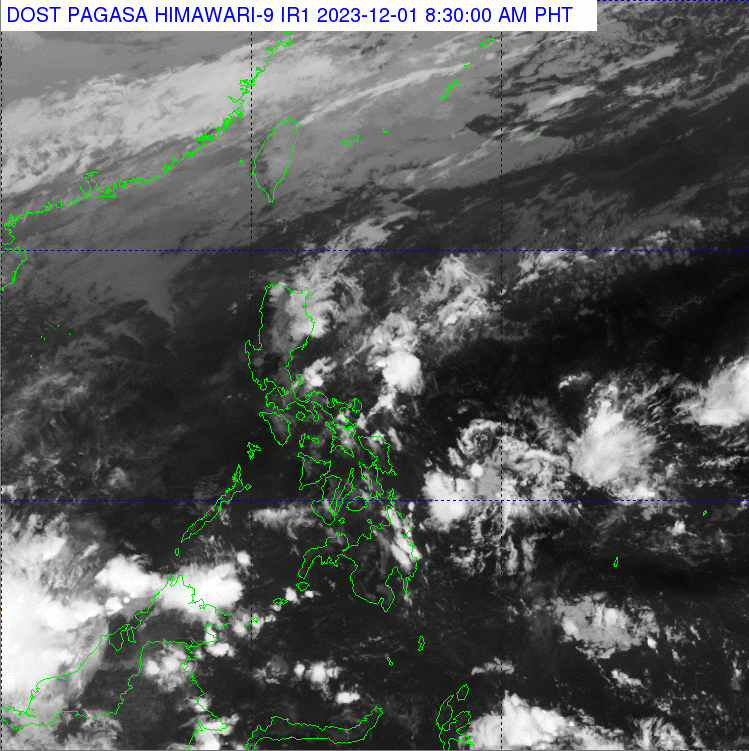The Philippine Atmospheric, Geophysical and Astronomical Services Administration (Pagasa) announced on Friday, December 1, 2023, that the country can expect the arrival of one to two tropical cyclones this month. According to weather specialist Robert “Obet” Badrina, although Pagasa has not detected any low pressure areas within or outside of the Philippine Area of Responsibility (PAR) at present, data and analysis suggest that one to two storms are likely to enter PAR within the month.
The current weather conditions in the Philippines are influenced by the northeast monsoon, which refers to the cold winds blowing from the northeast. These winds bring rainfall, particularly over the eastern side of the country. Northern and Central Luzon are currently experiencing the effects of the northeast monsoon.
In addition to the northeast monsoon, the easterlies are also contributing to the weather patterns in the Philippines. The easterlies, combined with localized thunderstorms, result in partly cloudy to overcast skies across the country. Metro Manila and other areas may experience isolated rain showers or thunderstorms, primarily in the afternoon or at night.
It is important for residents and visitors to stay informed about the weather conditions and heed any advisories or warnings issued by Pagasa. The arrival of tropical cyclones can bring strong winds, heavy rainfall, and potential risks such as flooding and landslides. Taking necessary precautions and following safety guidelines can help mitigate any potential hazards.
For those unfamiliar with the term, tropical cyclones are severe weather systems characterized by rotating winds and thunderstorms. They are known by different names in various parts of the world, such as hurricanes in the Atlantic and northeastern Pacific, typhoons in the northwestern Pacific, and cyclones in the Indian Ocean and southwestern Pacific.
It is worth noting that the impact of tropical cyclones can vary depending on several factors, including their intensity, size, and the specific geography of the affected area. Local laws, customs, and infrastructure play a crucial role in determining the level of preparedness and response to such weather events.
Given the unpredictable nature of tropical cyclones, it is essential to remain vigilant and stay updated with the latest weather forecasts and bulletins. Pagasa, as the official weather agency in the Philippines, provides regular updates and warnings to help individuals and communities make informed decisions and take appropriate actions.
Remember, when it comes to severe weather events like tropical cyclones, preparedness is key. Stay informed, stay safe, and be ready to respond effectively to any potential impacts.
Source: The Manila Times







